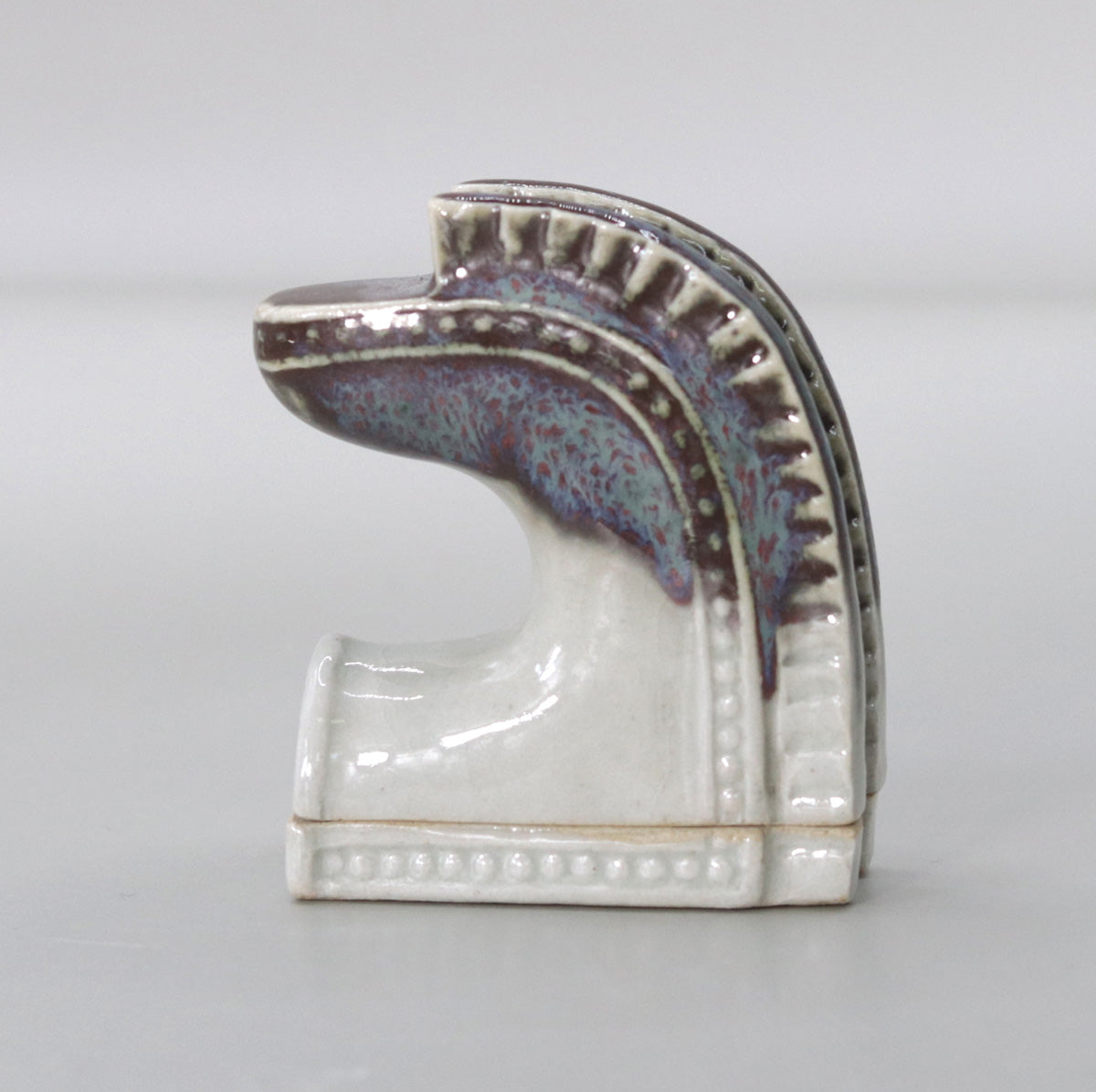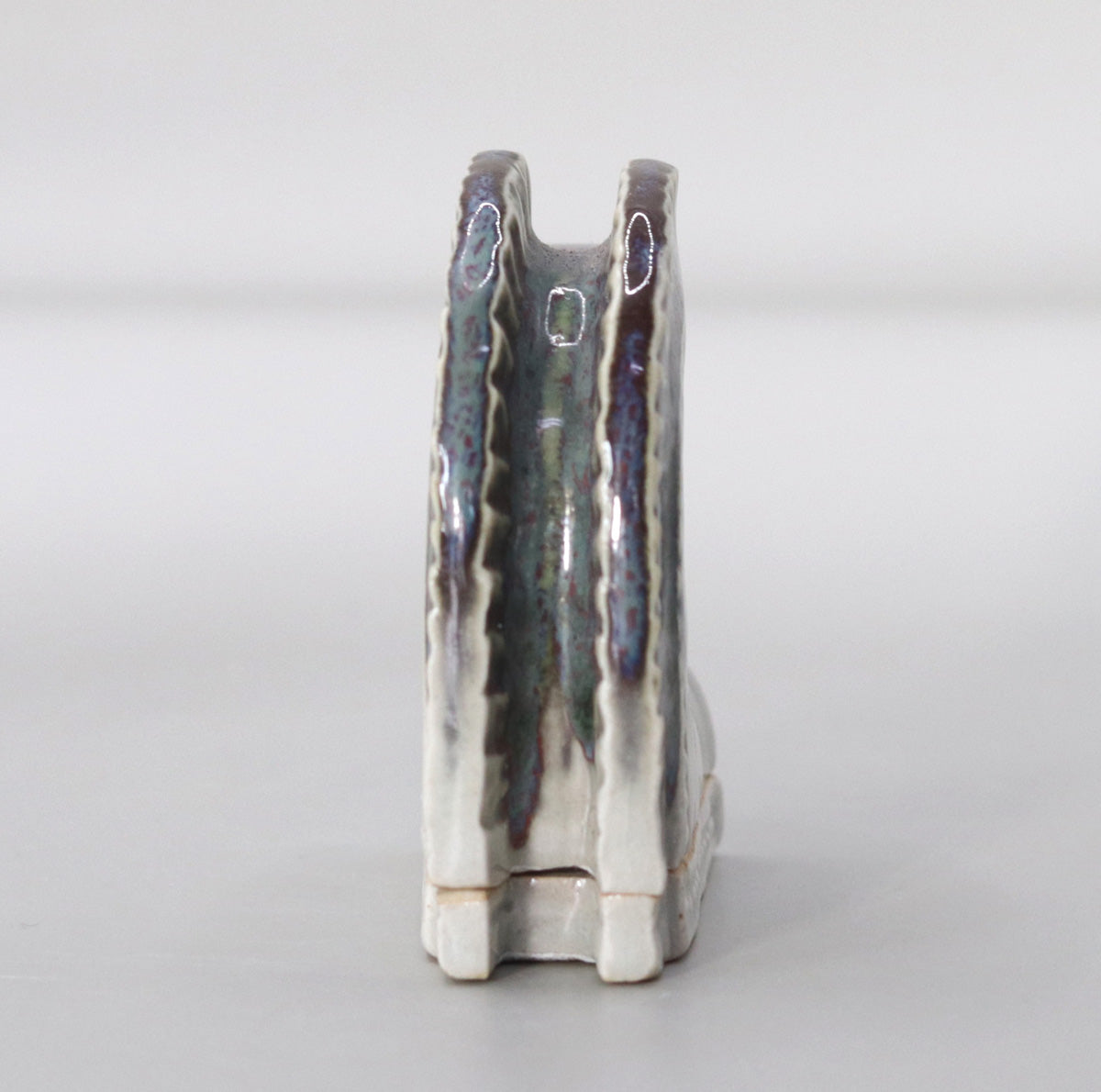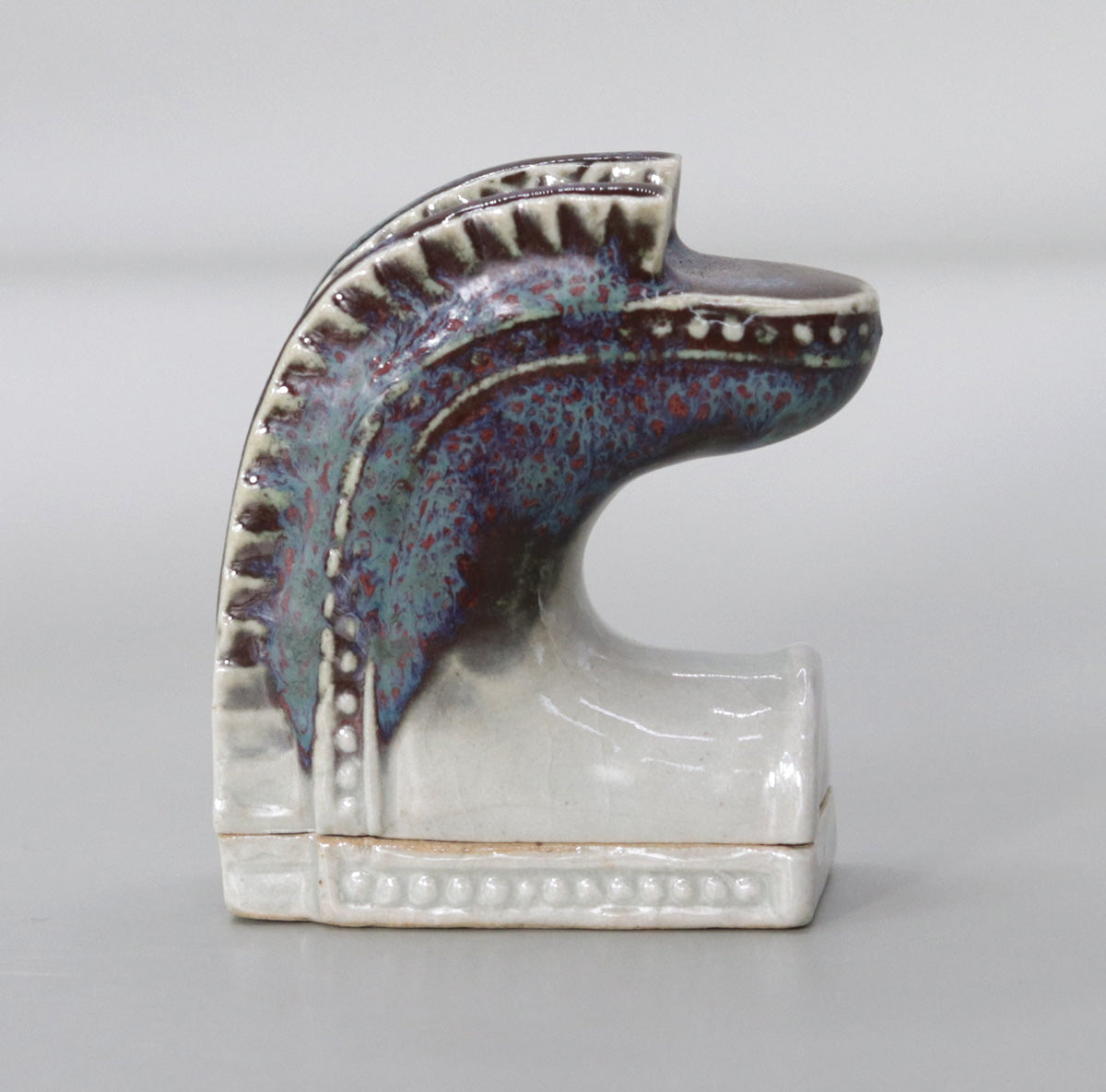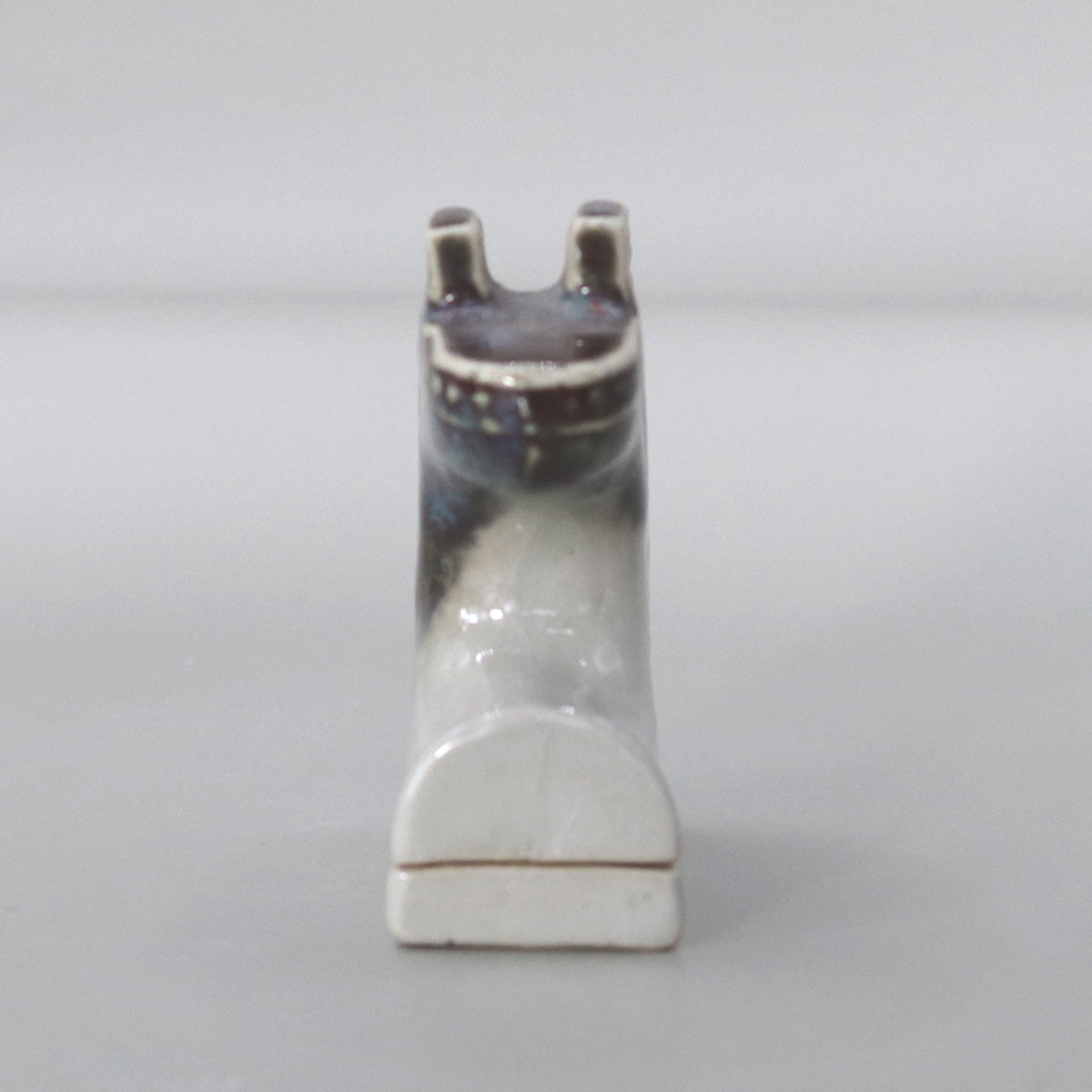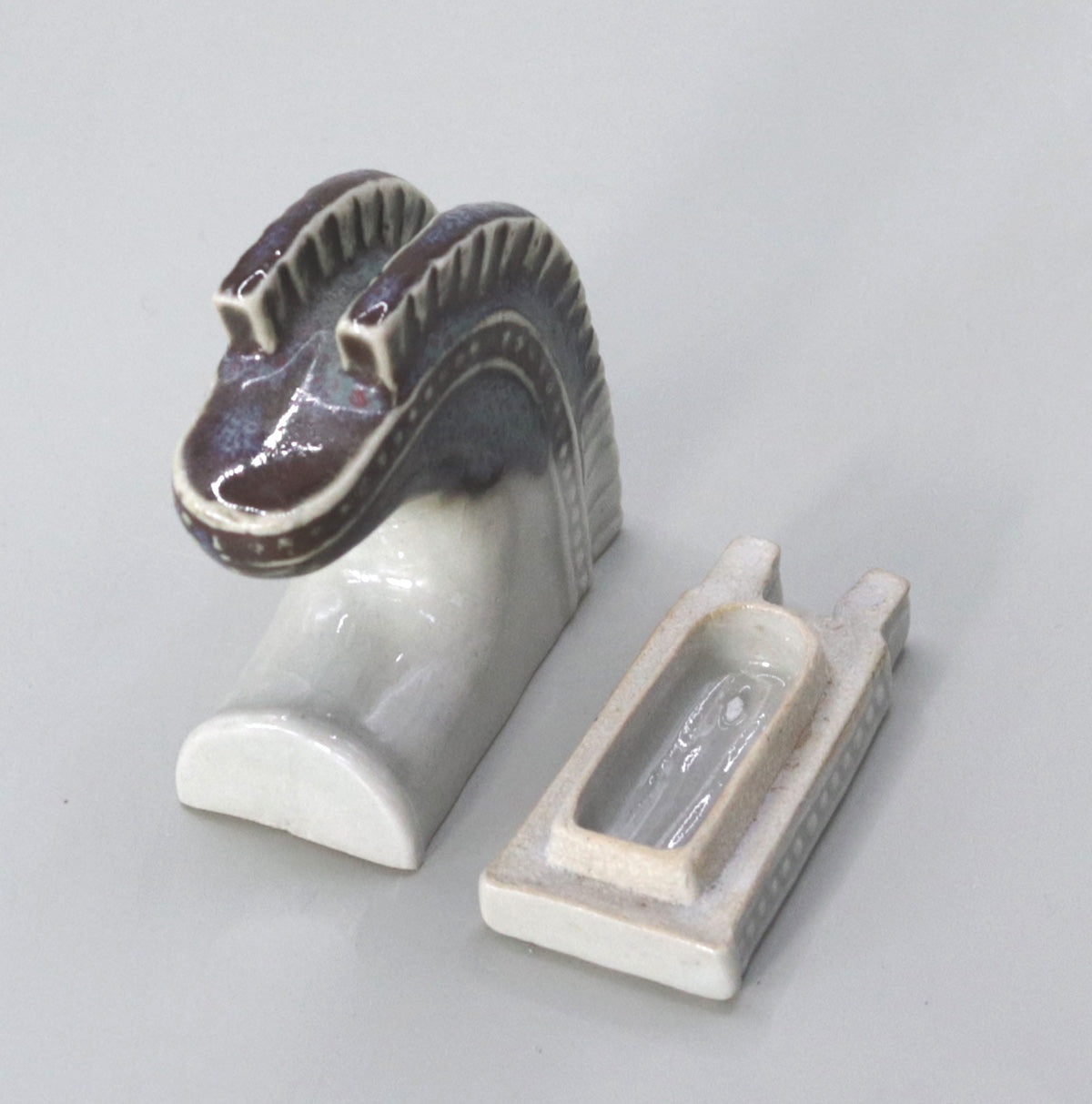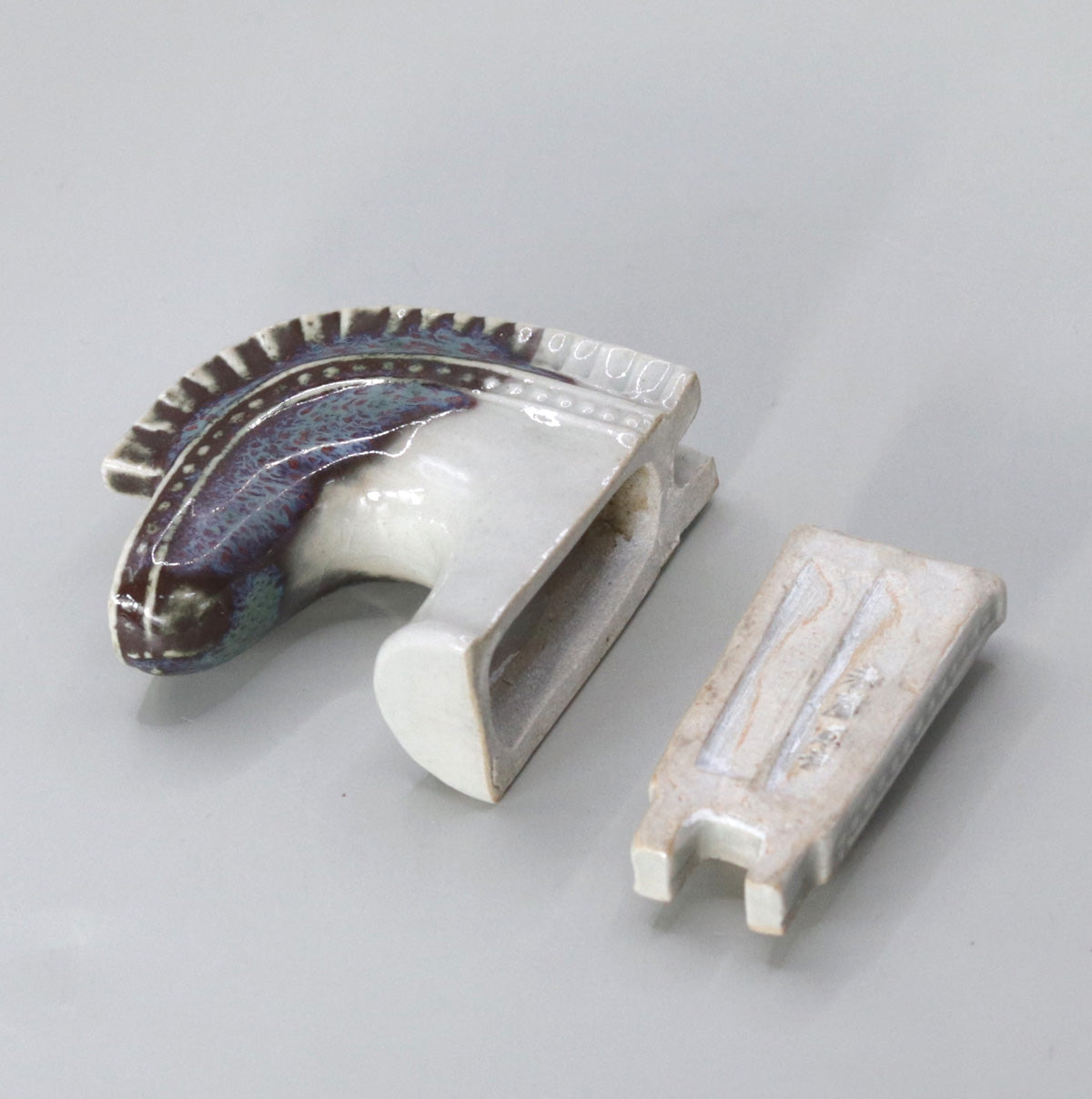Incense holder by Rakusai Onishi
Incense holder by Rakusai Onishi
Couldn't load pickup availability
Width: 5.5cm x 2.8cm Height: 6.6cm
Shibi-kogo (incense holder) by Rakusai Onishi
--A tower in the palm of your hand, gently topped with a Tenpyo-era cypress bark roof--
1. Overview of the work
This work is a shibi-gata incense container made by Onishi Rakusai, the eighth generation of Akahada ware makers in Nara. Shibi-gata are decorative tiles that are placed on both ends of the ridgepole of temples and palaces, and their shape resembling a leaping fish has been considered an auspicious sign to ward off fires. This work condenses the original shape into an adorable size of about five centimeters in height, and by dividing the lid into two parts, top and bottom, it also has the functionality to store fragrant wood and paste incense.
2. Features of the Shape and Design
| perspective | Forming elements | Points to note when viewing |
|---|---|---|
| side | Semi-arched back and upright ridgepole | The arch reminiscent of the ridge of a roof is emphasized, elegantly expressing the curve of the ridgepole. |
| top | Step marking the end of a gable | It alludes to the idea of a real Mount Sumeru and symbolizes prayer reaching up to the heavens. |
| hem | A frame made of a series of pearl patterns | The rafters of the girder row are indicated with minimalist dots, adding an accent that tightens the overall look. |
Particularly eye-catching is the kiln-changed purple glaze that runs across the entire back. A copper-based coloring agent is applied to the milky white base glaze, and purple, blue, and green patterns are created by the flickering of the reducing flame. This is reminiscent of the "Yao Pian Tianmu" kiln-changed Tenmoku of the Song Dynasty Jun Kiln, and creates a texture that is unique and created by the coincidence of time and temperature.
3. Techniques and the contemporary development of Akahada ware
Clay : The clay used contains iron sand collected from around Mount Akahada, and fine iron powder is left in the base material to bring out a warm white color.
Forming : The clay slab is bent and pressed against a template to recreate the hard texture of roof tiles. The joints are left uneven, reminiscent of the seams of roof tiles, creating a visual rhythm.
Glazing : A highly transparent feldspar glaze is applied to the bottom, and a copper-red glaze is layered on top. An iron glaze is then brushed onto the rim to give it a subtle metallic sheen.
Firing : 14 hours of reduction firing at over 1200℃. The copper red glaze is deprived of oxygen and undergoes a phase change from reddish purple to blue-purple, causing tiny specks (crystals) to appear.
4. Historical and cultural background of the Shibi motif
Shibi originated in China during the Northern and Southern Dynasties period and was introduced to Japan along with Buddhism during the Asuka period. As seen in the Golden Hall of Horyuji Temple and the Great Buddha Hall of Todaiji Temple, it was valued as a talisman for protecting the nation and preventing fires, and later spread to the design of imperial court architecture and shrines and temples. In the tea ceremony, incense containers that copied architectural decorations became popular from the Momoyama period onwards, leading to the creation of famous items such as Sen no Rikyu's "Mitsuuroko Shibi Incense Container." This work is a reinterpretation of this respect for ancient works using modern Akahada ware techniques, and can be said to be a reproduction of the architectural beauty of Nara on the desk.
5. Arrangements at the tea ceremony
| Season and taste | Tool group proposal | Types of Incense | Stage Effects |
|---|---|---|---|
| Meng Chun first pot | Scroll: "Every day is a good day", Flower: White plum blossom branch, Kettle: Cylindrical shape with a long sleeve | Borneolum + Sandalwood | Symbolizing protection from evil and purification for the new year |
| Mid-Autumn Festival | Scroll "Dokushaku (dokushaku) under the moonlight", flowers: Lady's mantle and Usui, incense holder with shiso on the shelf | A piece of Kyara | Recalling the silence of temple buildings |
| Year-end gift | Scroll "The Sound of Bells and Clouds of Mercy" is displayed in a pair with a temple bell and incense holder. | Neri-ko "Chitose" | Praying for fire prevention and the New Year |
6. Mr. Onishi Rakusai's ceramics philosophy
Onishi Rakusai believes in "embodying the culture and prayers of Nara in his vessels," and has sublimated symbols of the land, such as deer, temple bells, and shio, into tea ware. In order to produce different kiln changes for each piece, he changes the position of each piece when loading it into the kiln, and is thorough in his work of interacting with the flames. The shio incense container is one of the culminations of his exploration, and is a rare example that combines the scale of architectural remains with the lovability of a piece that fits in the palm of your hand.
7. Summary
This piece is a masterpiece that condenses the shibori, a symbol of Nara temple architecture dating back over 1,300 years, into an incense holder just a few centimeters in size. The mottled purple glaze shimmers against the serenity of the milky white glaze, giving it a color reminiscent of the dawn light shining on a temple building in the early morning. The incense smoke that rises the moment you open the lid is reminiscent of purifying flames rising from the shibori on the roof into the sky, carrying the spiritual energy of the ancient capital into the tea room. Please take your time to enjoy the beauty of the form and the exquisite kiln changes that are unique to Onishi Rakusai in the palm of your hand.
A conversation with Rakusai Onishi – High-end pottery specialty store [Amagi-do]
Share
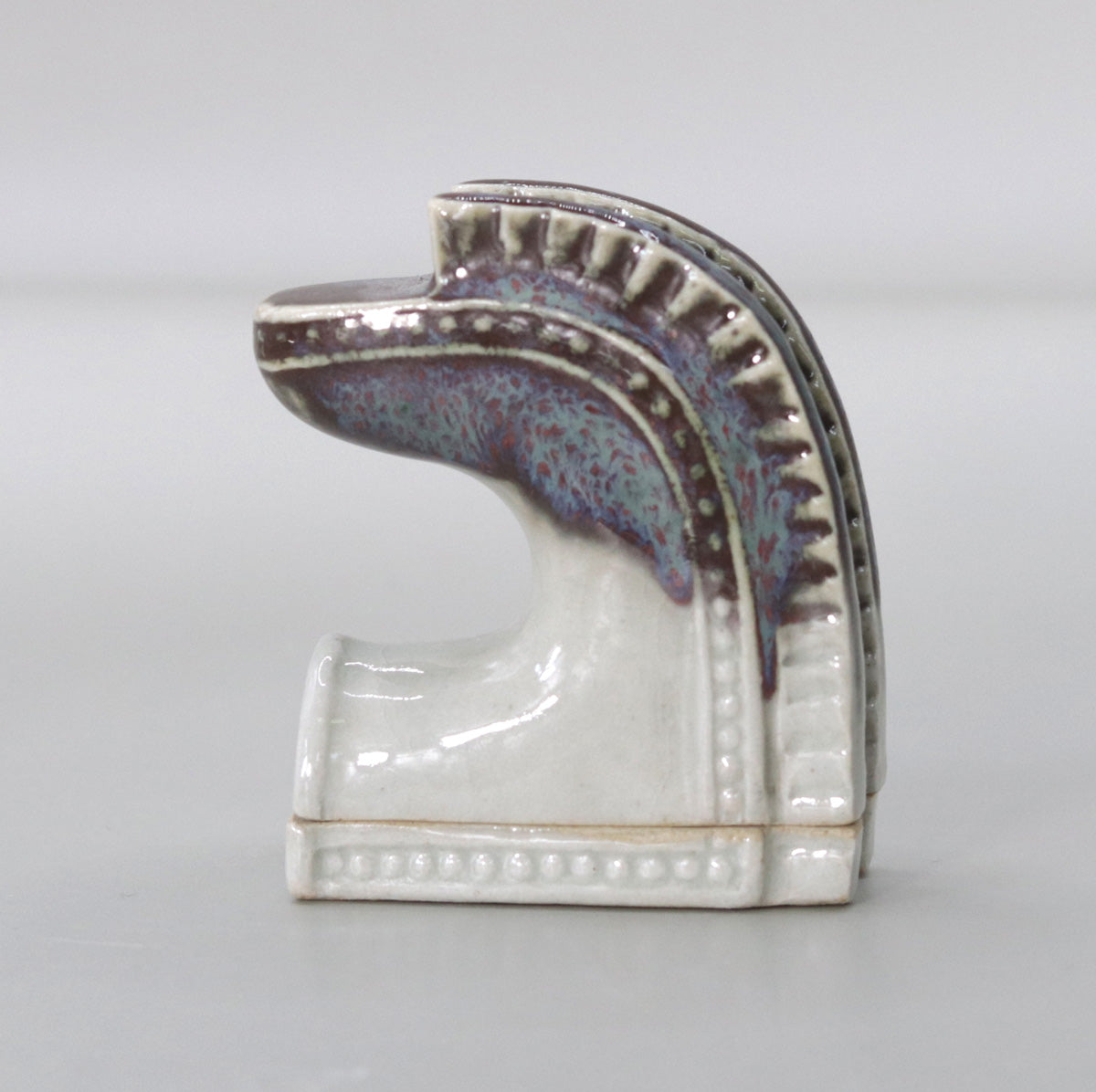
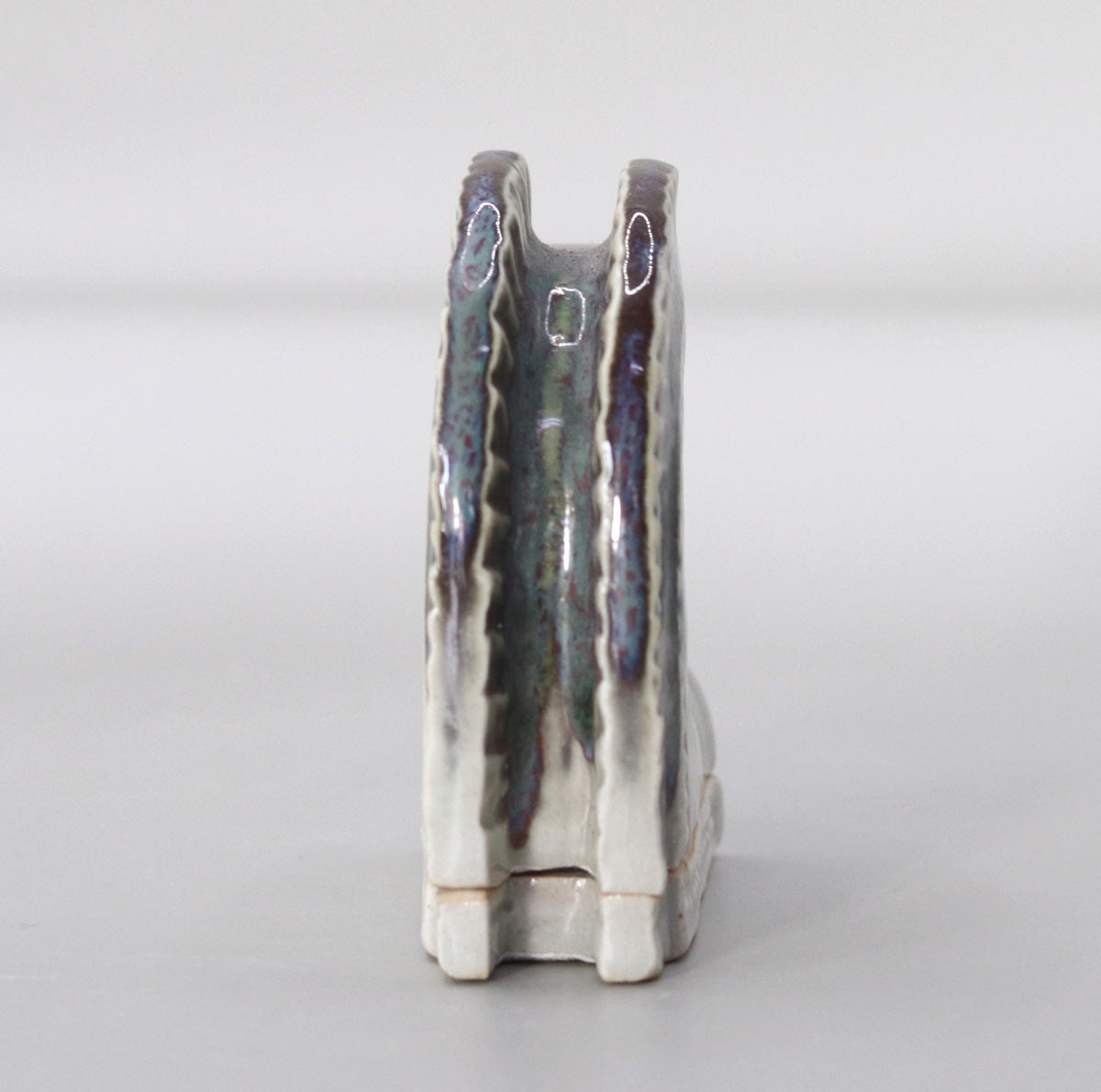
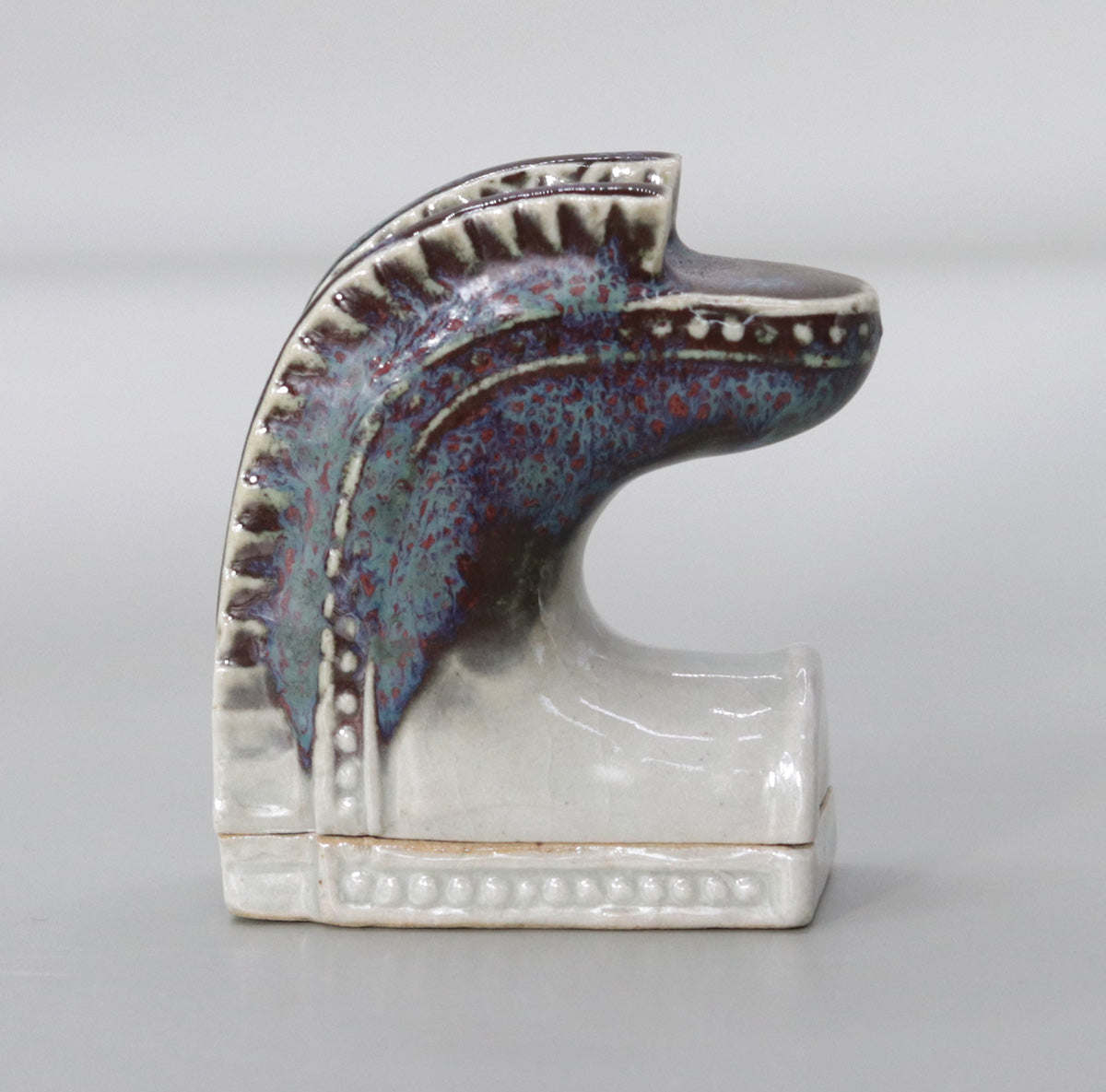
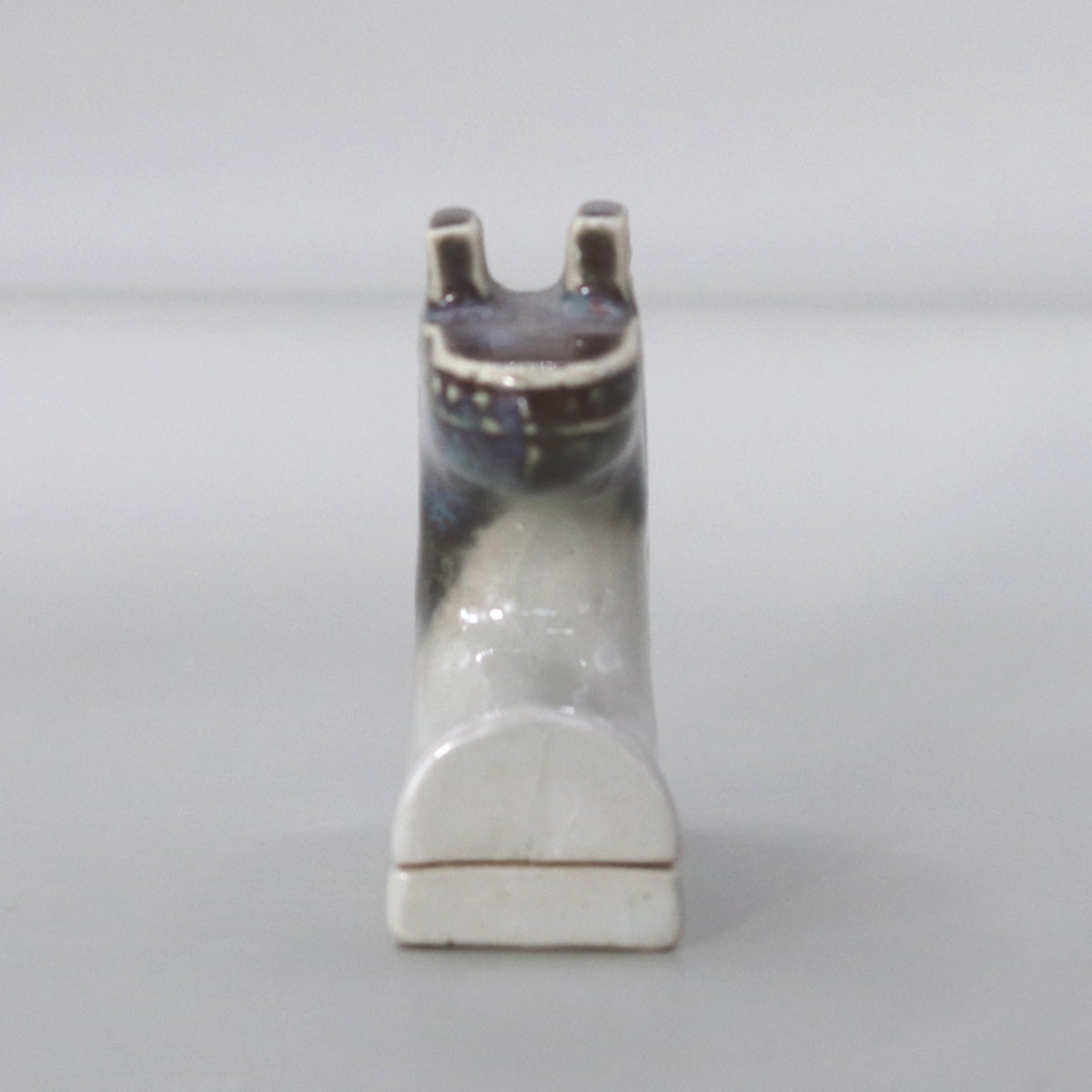
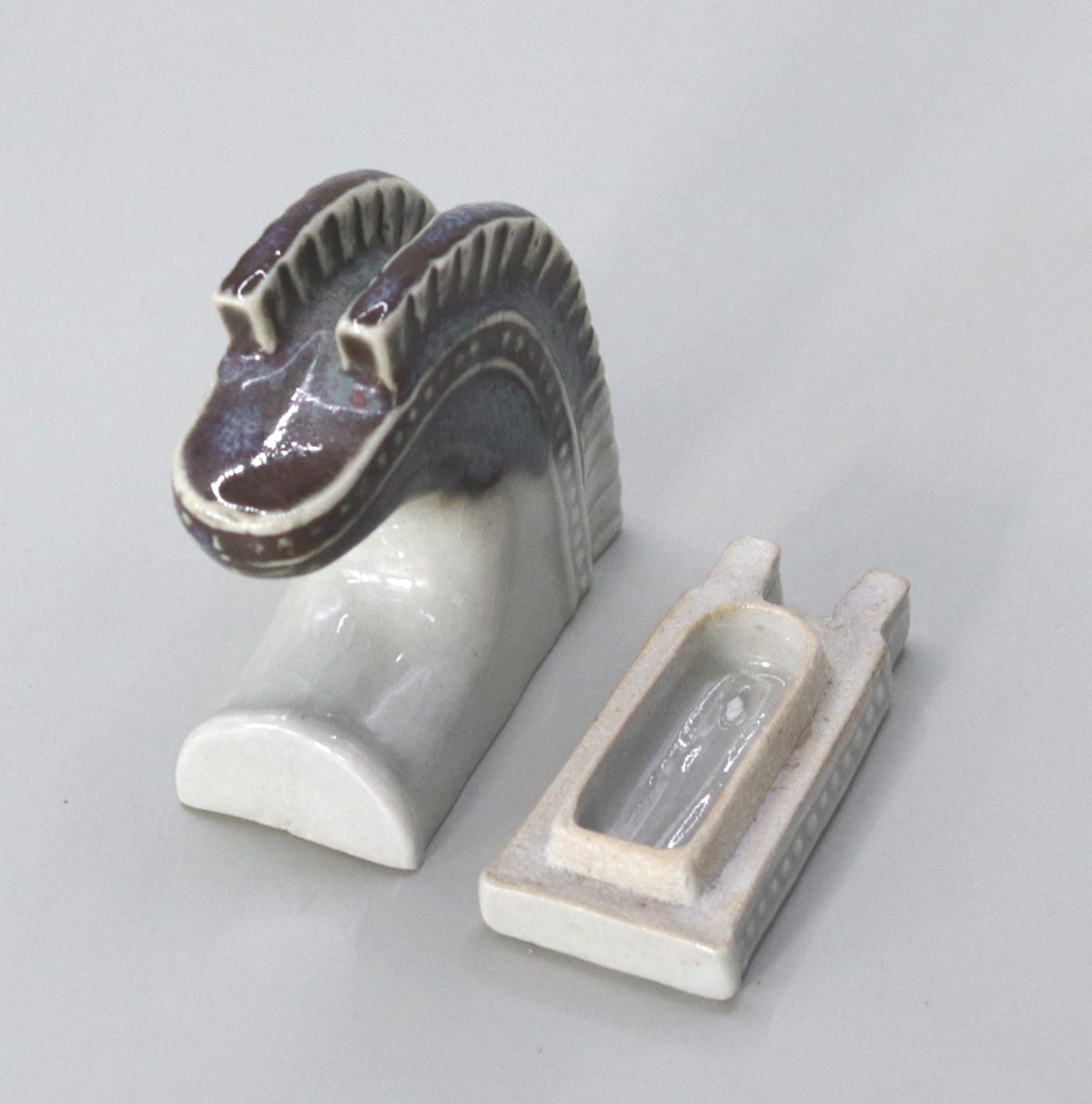
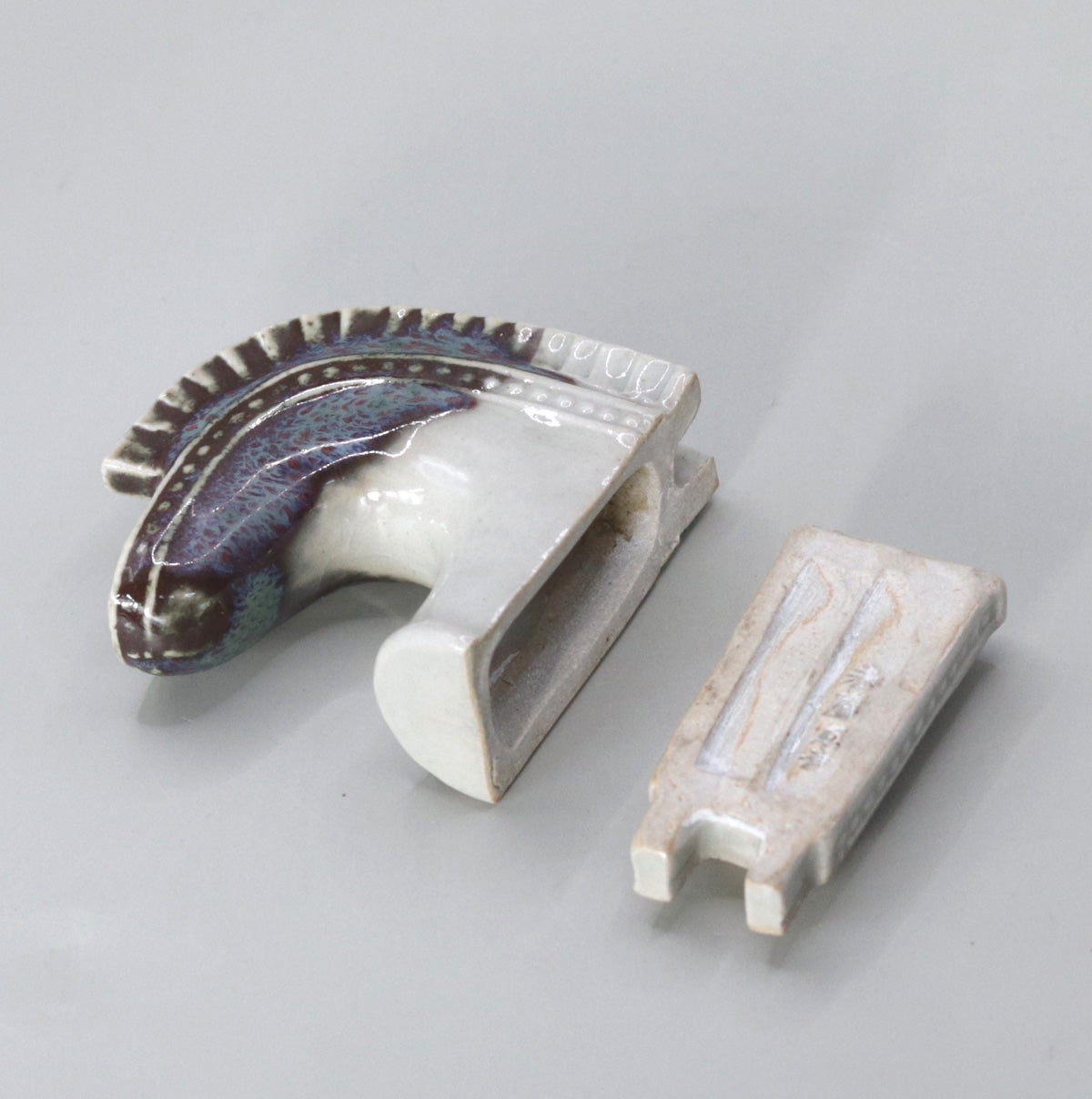
Multi-Column
-
[I will send it to you quickly and carefully]
We carefully package each product in a way that suits it best.
Also, delivery times vary depending on the piece (vessel, etc.).
Items that already come with a box will be shipped within 1-3 days of the order date.
For items that require a box to be made after your order, it will take approximately 30 days for production to be completed and then shipped.
In either case, once we have confirmed your order, we will contact you by email to inform you of the delivery date.
-
[Requests when purchasing pottery]
Even products that look the same may differ slightly in color, shape, size, etc.
The way the glaze is used, the power of the kiln, the firing method, the season, and the humidity also affect the appearance of the pottery.
Please understand the individuality of each piece of pottery and enjoy the unique warmth of handmade.

